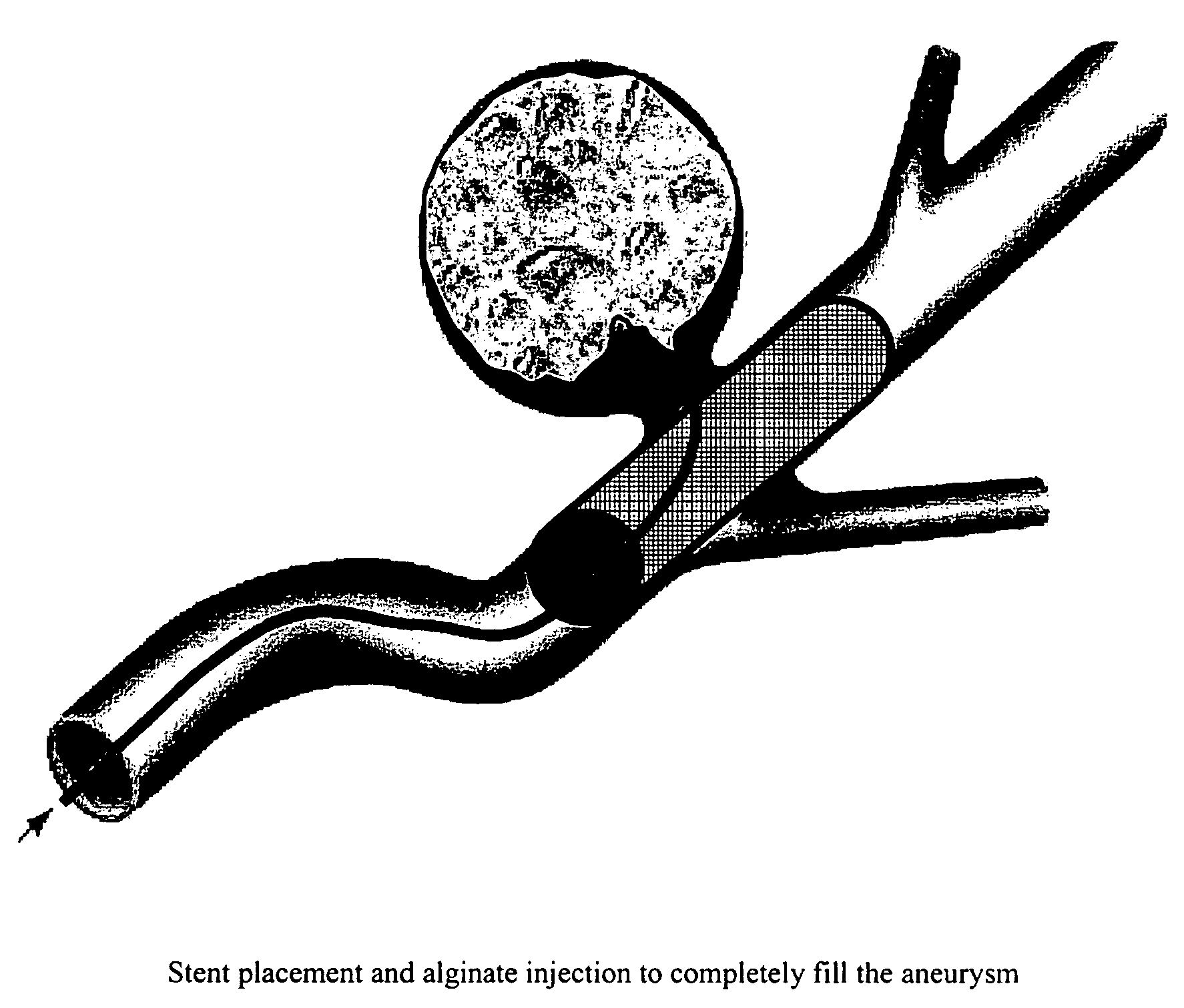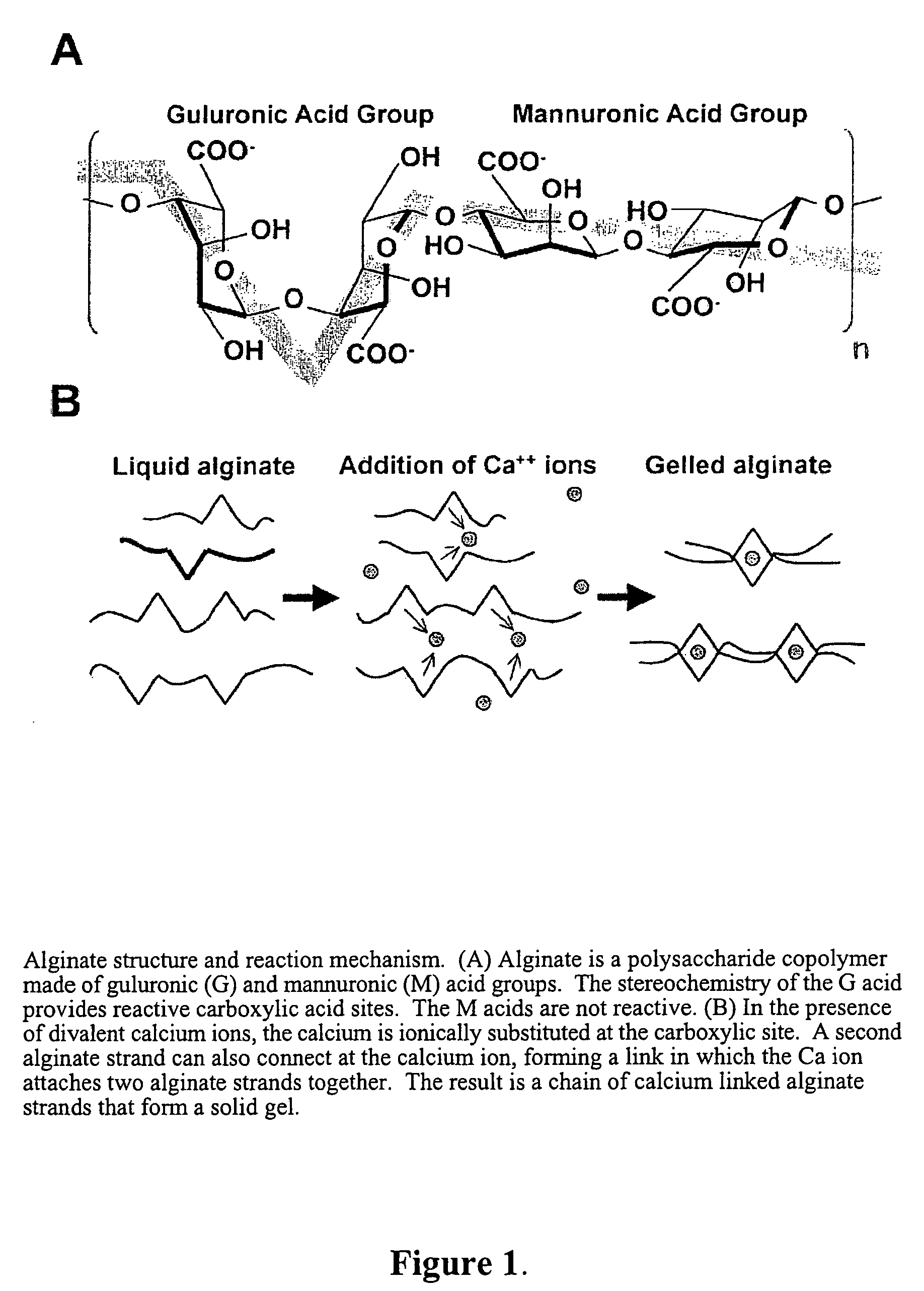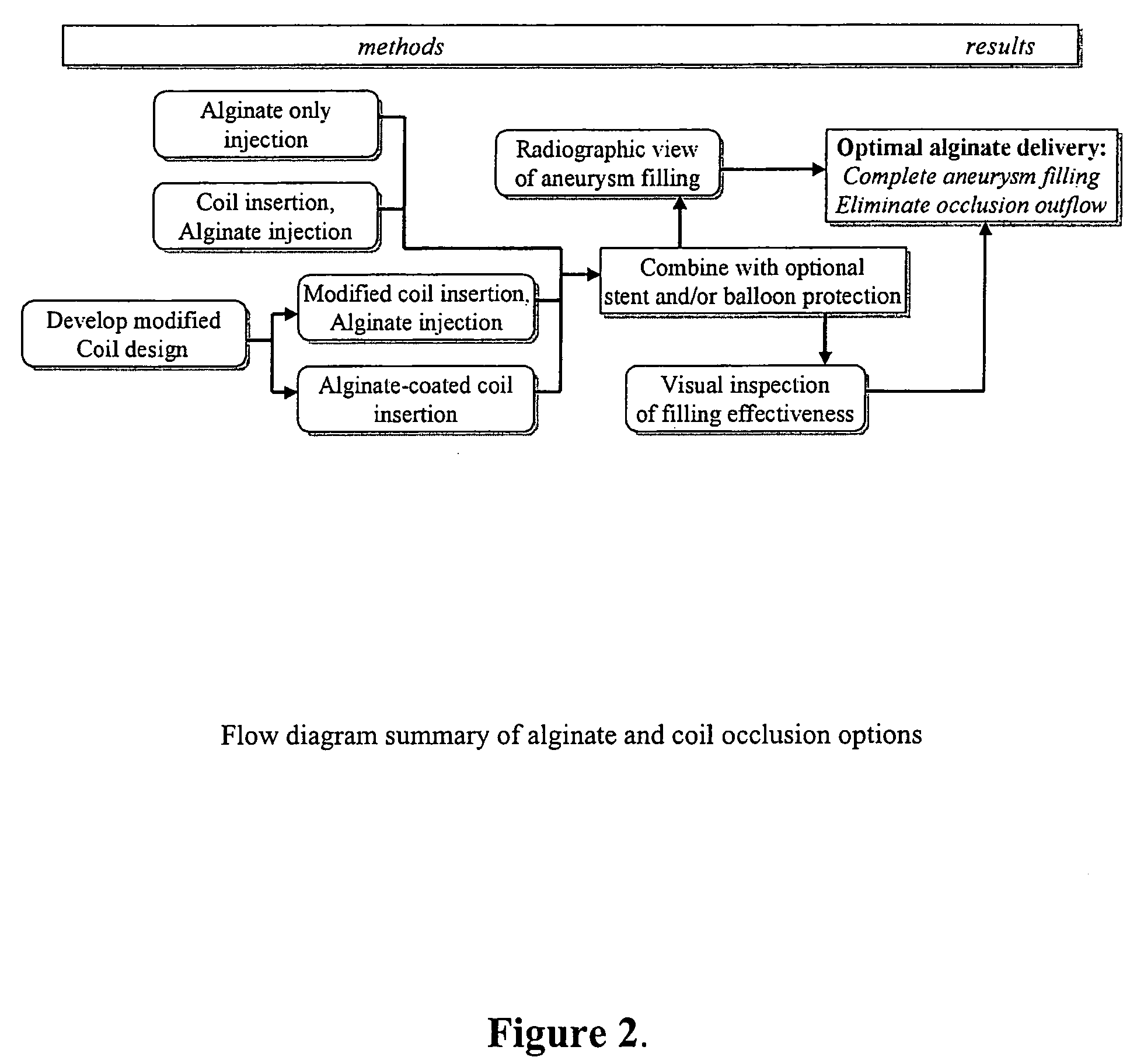Compositions and methods for improved occlusion of vascular defects
a technology of vascular defects and compositions, applied in the field of compositions and methods for forming an endovascular occlusion, can solve the problems of affecting the life of patients, affecting the treatment effect, and threatening the lives of millions of people, and achieves the effect of minimizing risk and great therapeutic
- Summary
- Abstract
- Description
- Claims
- Application Information
AI Technical Summary
Benefits of technology
Problems solved by technology
Method used
Image
Examples
example 1
Alginate Biocompatibility
[0101] The short- and long-term tissue reactivity was tested by injecting calcium alginate into the fat capsule surrounding the kidney of 32 rats weighing 300±50 g each. The rats were anesthetized with a ketamine cocktail (50 mg ketamine, 5 mg Xylazine, 1 mg PromAce) dose of 0.5 to 1 ml per animal. A 3 cm incision was made on the left side of the abdomen. The fat capsule around the left kidney was isolated. A pocket was made in the capsule, next to the kidney, and approximately 0.5 ml of alginate and 0.68 M CaCl2.2H2O, at a 1:1 volume ratio, was injected and polymerized. Each of the four polymer types was injected into the kidney of two separate rats to determine the significance of the tissue reaction during a set time period (total of 8 rats per time period). The second kidney of each rat was untouched and served as a control. Separate groups of 8 rats were sacrificed after 1 day, 1 week, 3 weeks, and 9 weeks, a total of 32 rats for the entire study. Both...
example 2
Alginate Molecular Weight Characterization
[0104] Reacted alginate molecular chain length is often referred to by the alginate's apparent viscosity (in mPas) and molecular weight (MW in g / mol). The apparent viscosity of unreacted alginate is determined by creating a 1.0 wt % solution of alginate dissolved in water and measuring its viscosity at 20° C. The apparent viscosity is proportional to the molecular weight of the alginate. Molecular weight can be measured by size exclusion chromatography with multi-angle laser light scatter detection analysis. Purified, high G acid content alginates (PHG) come in various molecular weights, which can affect the usable concentration and final viscosity of the liquid alginate in solution. Various PHG alginates were tested in vitro for mechanical stability and polymer yield based on final viscosity: [0105] PHG alginate, apparent viscosity of 34 mPas, MW of 78,000 g / mol, G / M of 68 / 32 [0106] PHG alginate, apparent viscosity of 37 mPas, MW of 87,000...
example 3
In Vivo AVM and Aneurysm Studies
[0126] Studies with embolizing in vitro aneurysm swine models with alginate show that the alginate completely filled and occluded the aneurysm fundus (FIGS. 10a-d &FIGS. 11a-c).
[0127] In other embodiments of the inventions, in vivo vessel models were created in the neck of swine, based on swine models of an AVM lesion known to those of ordinary skill in the art. The results showed that ALGEL could be precisely visualized with modern fluoroscope equipment and focally delivered to precise areas of the vessel model, resulting in complete occlusion with no distal embolization.
[0128] Swine studies also resulted in a new chronic swine model that could be used to determine an endovascular gel's long-term mechanical stability, biocompatibility, and bioactive tissue growth response. The chronic model has been used extensively to focally deliver ALGEL without the concern of particulate flow downstream. Current studies show that the ALGEL delivery and reactio...
PUM
| Property | Measurement | Unit |
|---|---|---|
| diameter | aaaaa | aaaaa |
| diameter | aaaaa | aaaaa |
| diameter | aaaaa | aaaaa |
Abstract
Description
Claims
Application Information
 Login to View More
Login to View More - R&D
- Intellectual Property
- Life Sciences
- Materials
- Tech Scout
- Unparalleled Data Quality
- Higher Quality Content
- 60% Fewer Hallucinations
Browse by: Latest US Patents, China's latest patents, Technical Efficacy Thesaurus, Application Domain, Technology Topic, Popular Technical Reports.
© 2025 PatSnap. All rights reserved.Legal|Privacy policy|Modern Slavery Act Transparency Statement|Sitemap|About US| Contact US: help@patsnap.com



